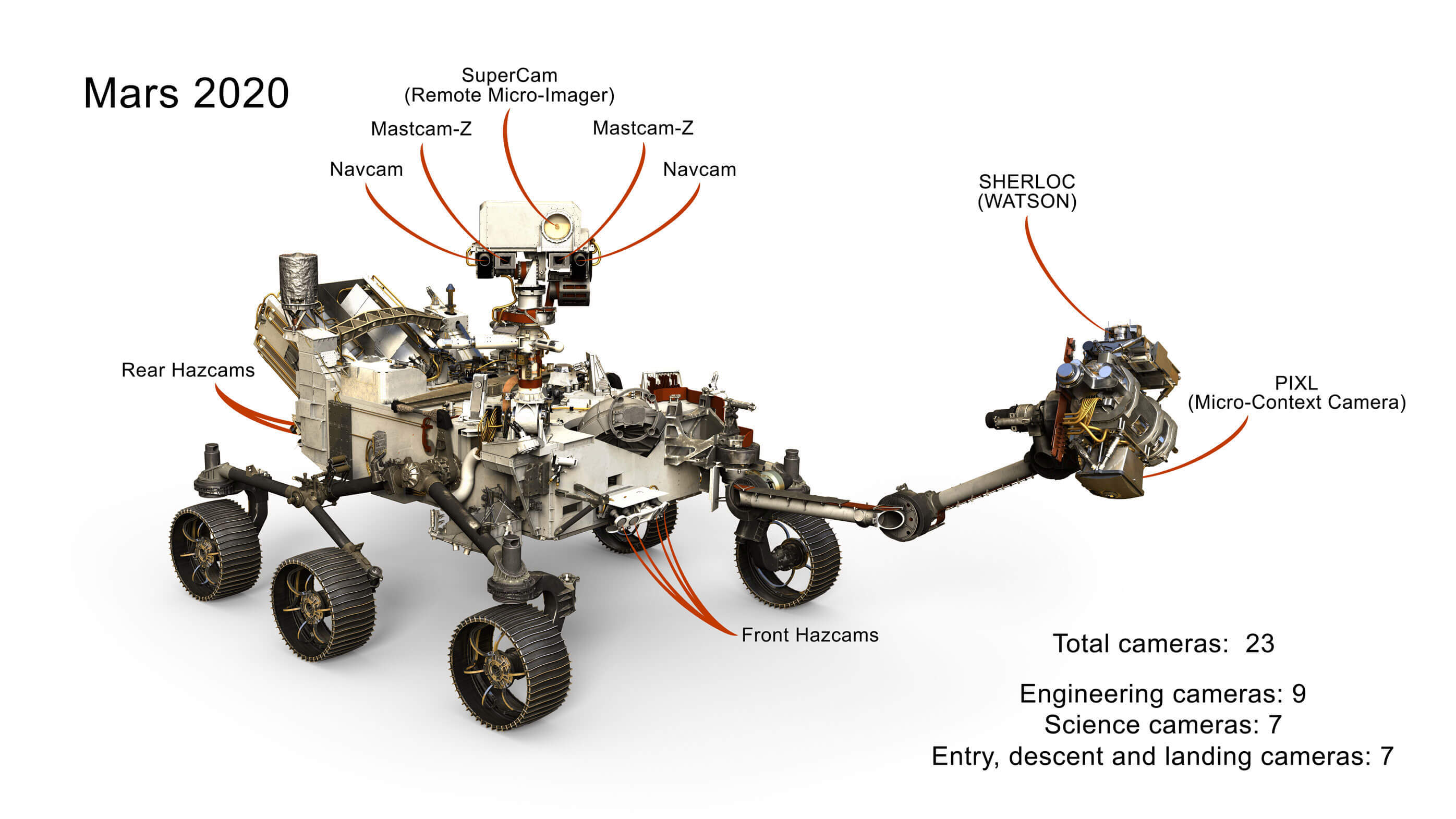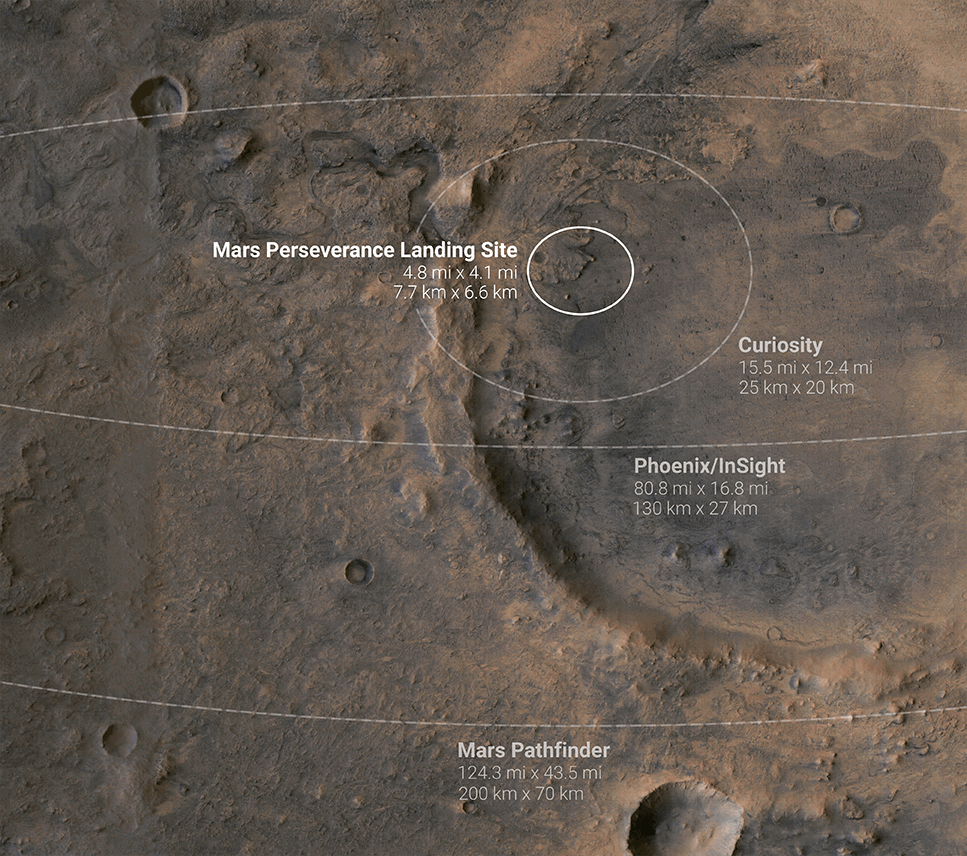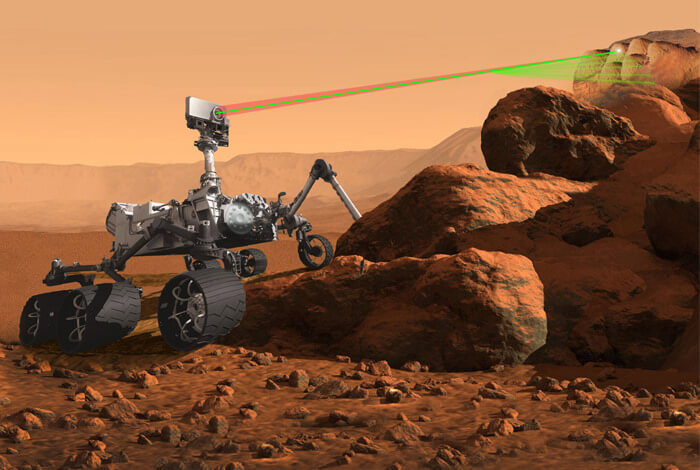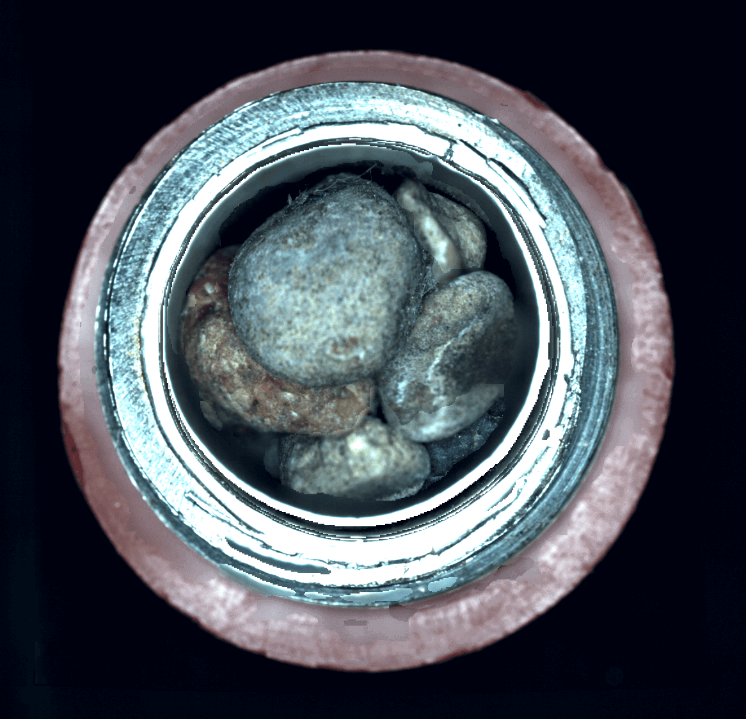
| The Perseverance rover is searching for signs of water and ancient life on Mars |
| The rover uses a total of 23 cameras to navigate and collect samples |
| A laser vaporizes rock up to 7m (20ft) away as a spectrometer analyzes the composition |
| Investigating if substances on Mars would be harmful to humans |
NASA’s missions to Mars over the last few decades have proven that parts of the Red Planet were likely covered in water billions of years ago. The Perseverance rover is now roaming the cold, dry surface of Mars looking for signs of ancient microbial life. It landed in February 2021 and is analyzing rock and soil samples to better understand Mars’s past, present, and potential for future human colonization. Perseverance is equipped with 23 cameras helping it navigate and pursue its mission (Figure 1).1 These varied optical systems are essential in determining whether Mars once sustained life and if it could be habitable in the future.

The many imaging systems on Perseverance serve as its “eyes” and other senses. Seven cameras were specifically used to assist the rover in entering Mars’s atmosphere, descending towards the surface, and landing safely.1 These systems, along with advanced algorithms, allowed the rover to greatly improve the precision of where it could land, opening new regions of Mars for exploration (Figure 2). Nine engineering cameras help Perseverance drive autonomously and avoid hazards. Seven additional cameras allow the rover ¬to collect rock and soil samples and analyze their composition. Several of the most interesting scientific cameras are described below.

SuperCam is one of the most interesting scientific cameras on Perseverance. It uses a high-power laser to vaporize rocks from up to 7m (20ft) away and then a spectrograph analyzes the remains to determine their chemical composition(Figure 3).1 SuperCam is looking for the presence of organic compounds which could indicate microbial Martian life from the past. The laser generates a plasma (very hot gas of free electrons and ions) after hitting its target.

The other cameras on Perseverance serve a wide variety of functions. Three-dimensional stereo imaging lets the rover accurately sense its environment and avoid hazards.1 An X-ray fluorescence system characterizes chemical elements in target areas as small as a single grain of table salt. CacheCam is an imaging system which provides a top-down view of rock samples that Perseverance collects before they are sealed and stored (Figure 4). This allows scientists to keep a record of the entire process of sample collection and watch over it to ensure its proper function.






 Has Perseverance found any signs of ancient life on Mars yet?
Has Perseverance found any signs of ancient life on Mars yet?
 How many rovers are on Mars right now?
How many rovers are on Mars right now?
As of 2021, there are five rovers on Mars. Perseverance is the most recently launched and the others are Sojourner, Spirit, Opportunity, and Curiosity.
 How does this rover’s mission differ from past rovers?
How does this rover’s mission differ from past rovers?
Unlike past rovers, Perseverance collects promising rock and soil samples and stores them in a "cache" on Mars’s surface. A future mission could bring these samples back to Earth.
 Where on Mars did the Perseverance rover land?
Where on Mars did the Perseverance rover land?
It landed in the Jezero Crater, an ancient river delta which contains geological features that could only have been formed by water.
or view regional numbers
QUOTE TOOL
enter stock numbers to begin
Copyright 2023 | Edmund Optics, Ltd Unit 1, Opus Avenue, Nether Poppleton, York, YO26 6BL, UK
California Consumer Privacy Acts (CCPA): Do Not Sell or Share My Personal Information
California Transparency in Supply Chains Act